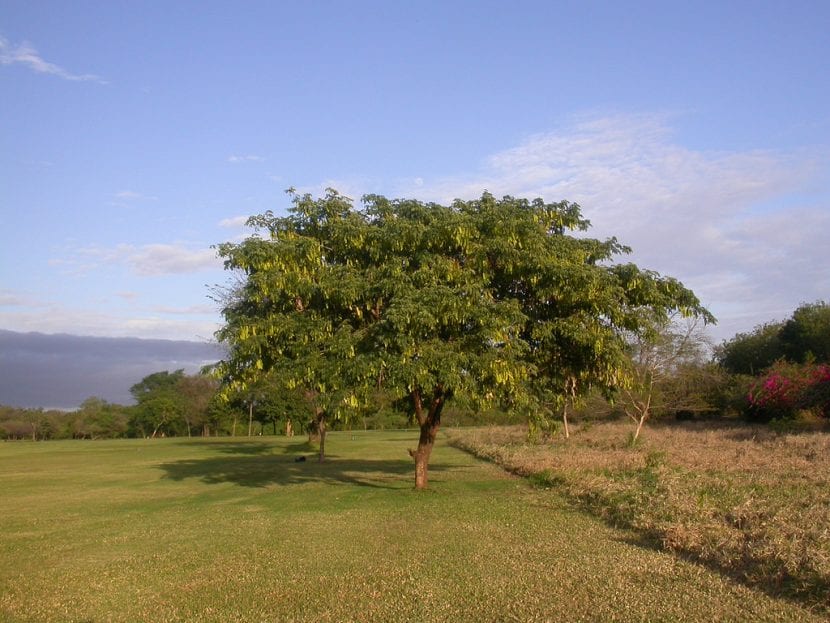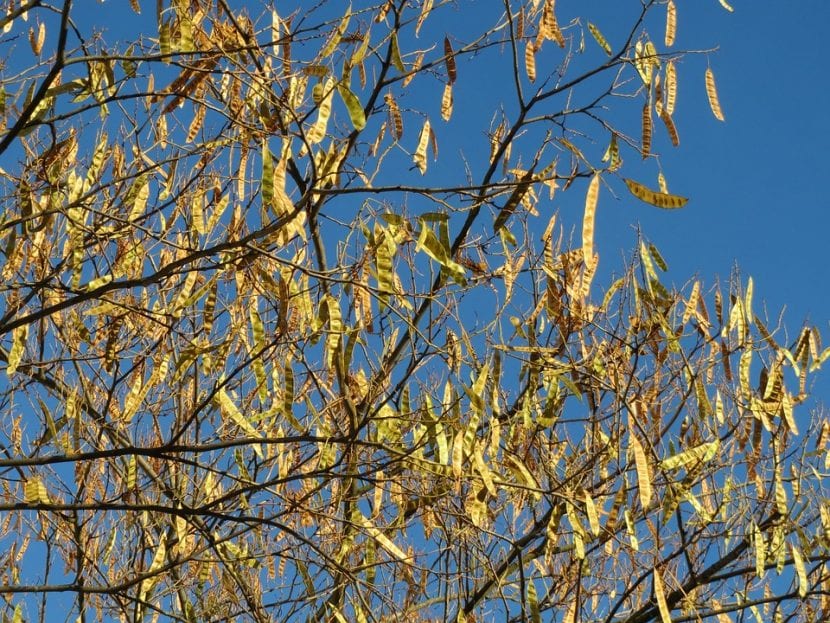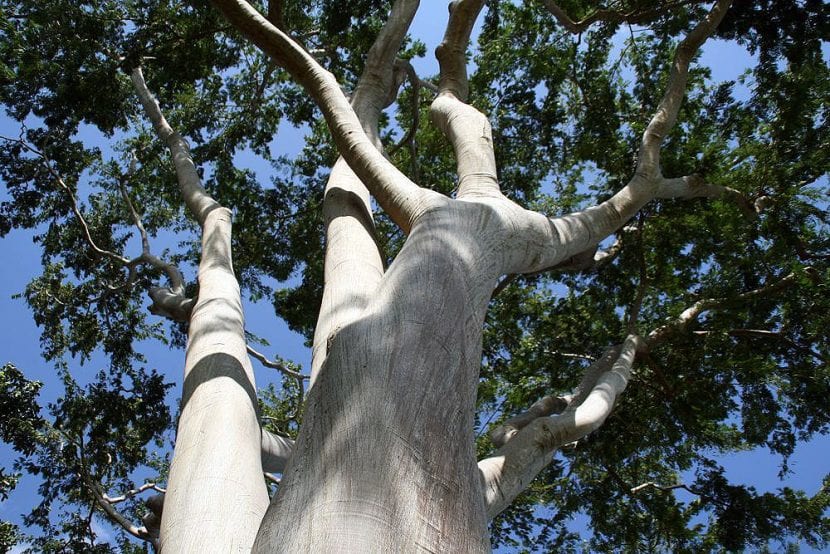
Albizia julibrissin
All the Albizia They are trees and shrubs much loved in gardens, both small and large, that produce brightly colored flowers. In addition, they multiply very easily by seeds, so having a specimen is not only possible but also a pleasure 😉.
Its growth rate is usually rather fast, although without reaching the extreme. Would you like to know everything about them?
Origin and characteristics

Albizia schimperiana // Image - Flickr / Scamperdale
Our protagonists are trees and shrubs, normally deciduous, belonging to the genus Albizia which is made up of about 140 accepted species originating from tropical and subtropical regions. They are characterized by having bi-pinnate leaves, with small greenish "pinnae" or leaflets.
The flowers are hermaphroditic, formed by a campanulate-cylindrical calyx and a cylindrical corolla with five triangular lobes at the lower end of the tube. The stamens, which sprout in great numbers, have long filaments with tiny anthers. And the fruit is a linear or oblong legume that contains ovoid or orbicular seeds.
Main species
The best known and most popular are:
- Albizia julibrissin: known as the silk tree, silky-flowered acacia or Constantinople acacia (not to be confused with plants of the genus Acacia) is a deciduous tree native to Southeast and East Asia that reaches a height of up to 15 meters. It produces pink inflorescences and resists up to -20ºC.
There is a variety with brown leaves called Albizia julibrissin 'Summer Chocolate'. - albizia lebbeck: known as the eastern ebony or siris, it is a deciduous tree native to the tropical south of Asia that reaches 18-30 meters in height. produces yellowish-white flowers. It does not resist frost.
It is used as a medicinal plant since it is astringent, and effective against coughs, flu, gingivitis or abdominal problems. - albizia procera: it is a deciduous tree native to South and Southeast Asia that reaches a height of 15 meters. It produces whitish-yellow inflorescences and resists frosts down to -18ºC.
What are their cares?
If you want to have a copy, we recommend that you provide it with the following care:
Location

albizia lebbeck // Image - Flickr / Scamperdale
They are plants that They must be outside, in full sun. They can also be in semi-shade as long as the area is bright.
Do not worry about its roots: they are not invasive, although it is advisable to plant them at a minimum distance of 4-5 meters from pipes, soil, etc., as well as other tall plants.
Earth
They grow in fertile soils in general, with very good drainage. So that:
- Garden: the soil has to be loose, light, rich in nutrients.
- Flower pot: from experience I advise mixing 60% mulch with 40% perlite. In this way, the roots will be able to get some of the nutrients they need for a long time. You can get the first here and the second by here.
Irrigation
The frequency of irrigation will vary greatly throughout the year, since the soil does not dry out as quickly in winter as in summer. What's more, It must be borne in mind that they do not resist drought, but neither do waterlogging Unless it is for a very specific moment (for example, if one day a year it rains torrentially and the terrain remains almost bogged down for a few hours, nothing will happen to them).
So to avoid trouble, it is necessary to check the humidity of the soil before watering, especially if we don't have much experience caring for plants. For this what we can do is:
- Using a digital moisture meter
- Introduce a thin wooden stick
- Dig about 5cm next to the plants
Anyway, in case of doubt we must know that, in general, it is necessary to water 3-4 times a week in the hottest season, and every 5-6 days the rest.
Subscriber
From early spring to late summer, with ecological fertilizers such as guano (on sale here) or the compost.
Multiplication

The Albizia multiply easily by seed in spring, following this step by step:
- The first thing to do is pour water into a glass and put it in the microwave for a few seconds, until it boils.
- Then, we put the seeds in a small strainer, and then put it in the glass for a second.
- Then, we put the seeds in another glass with water at room temperature and leave them there for 24 hours.
- The next day, we fill a pot of about 10,5 cm in diameter with mulch mixed with perlite in equal parts and water.
- Next, we place a maximum of three seeds on the surface, and cover them with a thin layer of substrate.
- Finally, we spray and leave the pot outside, in full sun.
In this way, the first seeds will germinate in 10-12 days (maximum one month).
Rusticity
It depends a lot on the species. The most resistant to cold and frost is A. julibrissin which is capable of living in areas up to -20ºC, but there are others, such as A. polyphylla or the A. saponaria, which can only live in warm tropical climates.

Albizia niopoides var. niopoids // Image - Wikimedia / David J. Stang
What did you think of the Albizia?
It seems to me a wonderful plant, I have several specimens and it is a beauty, it is the representation of life in a little tree, and this tree has the characteristic of folding its leaves at night as if it were sleeping.
Hi Steven.
Totally agree. Albizia are very, very grateful, and pretty plants 🙂
Thanks for comment. Greetings!